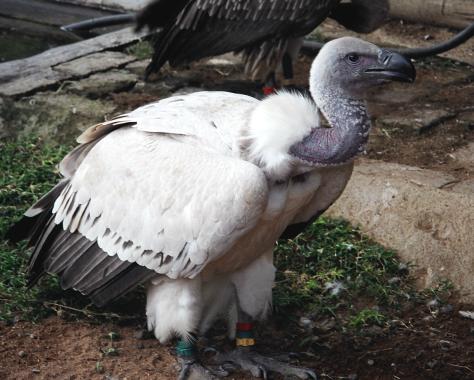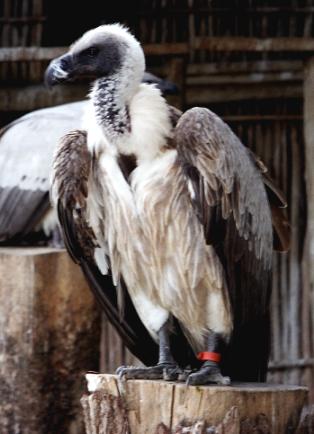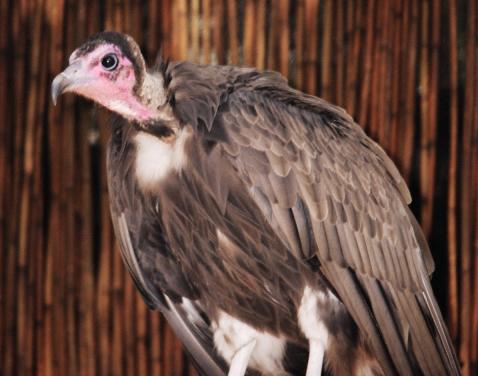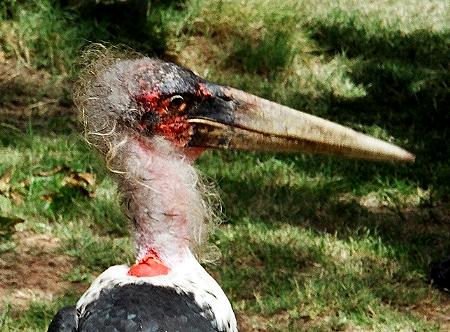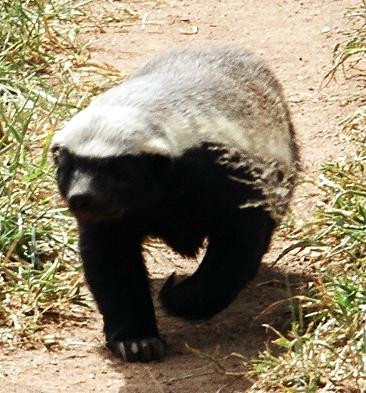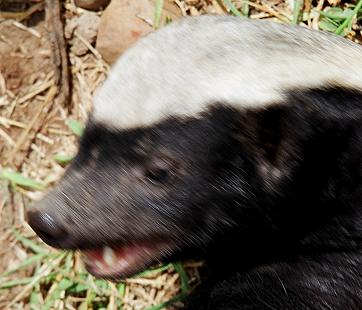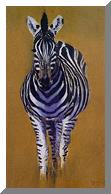Maholoholo has a lot of vultures in their aviary that can't go back to the wild
because of various injuries. It offers a good opportunity to take up close pictures of
vultures that you wouldn't get in the wild.
Here's a Cape vulture--one of the more common ones we saw in the wild, but
it is listed as threatened. Not pretty, but interesting. And we'd be knee deep in
carcasses without vultures cleaning things up for us.
This beauty is the African whitebacked vulture. It's the one seen
most at carcasses in the bush.
With a much sharper beak, the hooded vulture gets into all the nooks and
crannies when cleaning up carrion. It is not common except in the northern part of
southern Africa.
A close up of our old friend, the Marabou stork. Those feathers on the
back of his head and neck looked just like hair. Not a pretty fellow.
More to many people's liking were some of the animals that the center has in
for rehabilitation. Reminding me of a small wolverine, this waddling bundle of fur is a
honey badger--renowned for aggressive behavior, a serious biter, malicious digger, and tearer up
of things. But this little fellow was adorable! They said he was constant trouble at
the center, but he rolled over for the guide to scratch his tummy this day. My animal
pictures are not high quality but with all the small kids on our tour, it was hard to get a clear shot.
The honey badger has very loose skin which makes it easy for him to turn and
bite any predator that might grab him. They follow the call of the honey guide birds leading them
to bee hives in hollow trees. They tear the hive open and eat the honey and larvae--their
skin is impervious to bee stings. The honey guide birds then come in and eat honey and
beeswax till they can't digest any more.
You can see some of those serious teeth.
